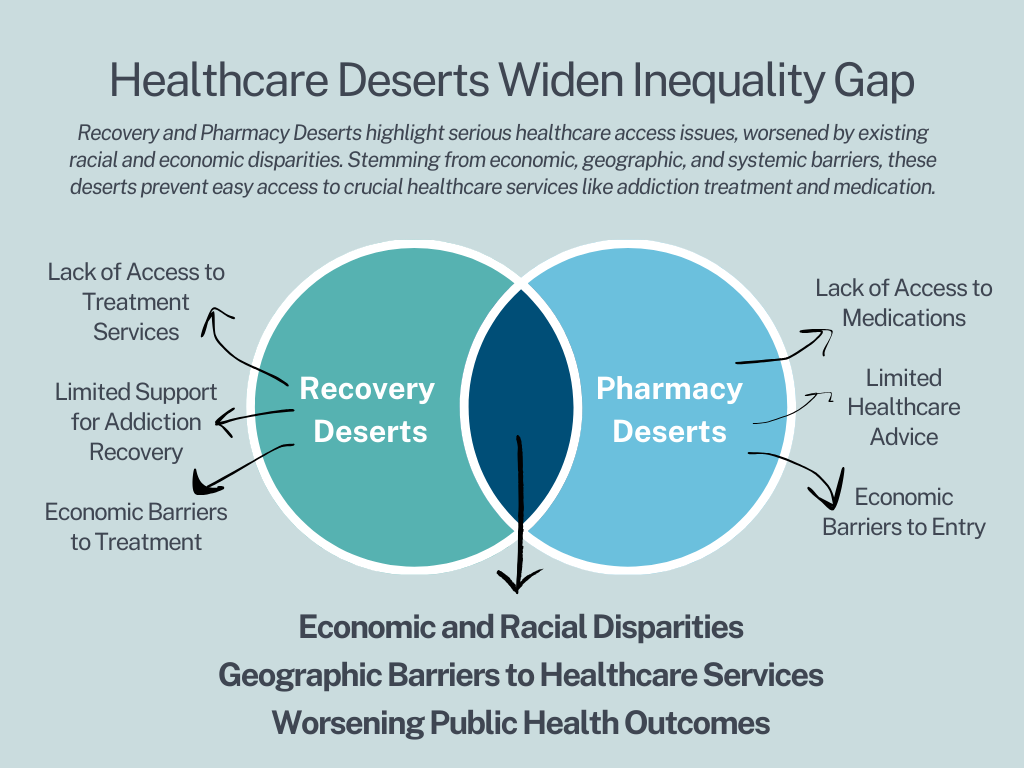Another Healthcare Desert Identified Further Revealing Gaps in Broken System
Recovery and Pharmacy Deserts highlight serious healthcare access issues, worsened by existing racial and economic disparities. Stemming from economic, geographic, and systemic barriers, these deserts prevent easy access to crucial healthcare services like addiction treatment and medication.

The narrative of healthcare deserts isn’t new, yet with each revelation, it stirs a fresh wave of awareness, urging us to look critically at the deepening gaps in a system we all rely on. The recent emergence of Pharmacy and Recovery Deserts (read the paper) validate the divide. These deserts throughout America, stark in their absence of essential health services, must not be ignored.
Pharmacy Deserts reported Sunday by the Washington Post, unveil the picture of communities scrambling for basic medications and healthcare advice, as their local drugstores shutter down. Recovery Deserts, a project that I collaborated on with colleagues from The Ohio State University and the community, sketch the grim reality of individuals entangled in the shackles of addiction with no escape. The common underpinning? An unfair health system failing to bridge the chasm between need and access.

The beauty of community lies in its power to unite in adversity. The reality of these healthcare deserts ought to stir more than just empathy; it should propel us towards a collective action aimed at identifying and eradicating these deserts one at a time.
Now is the time for the government, healthcare institutions, big pharma, academics, scientists, technologists, designers, and we, the community’s changemakers, to rally together and tackle the root causes head-on. It’s about listening to the stories, fostering a mindset of change, direct advocacy, and immediate action across jurisdictions.
The problem isn’t too big to solve. However, from my vantage point, the resolution rests in local initiatives powered with resources and advanced tools; supported by local, state, national, and international stakeholders. It’s a tall order, especially when technology is lacking across government institutions, and politics and motivations are both scattered and massive barriers. Yet, it’s a step we must take to mend the broken system that leaves far too many stranded in deserts of despair.
In 2017, I outlined a tool for the Governor of Ohio to tackle healthcare access issues related to opioid treatment. With today’s Web3 and AI advancements, this idea is closer to reality. Science has validated the initial algorithm, paving the way for actionable solutions. Web3’s blockchain technology enables permission-based access and secure data sharing across jurisdictions, and AI facilitates large-scale analysis and forecasting, aiming to address healthcare deserts with essential resources through unified efforts.
We hear your stories. We see the patterns. And I believe now more than ever, we have the community, talent and resources to tackle this issue head on. We await the invitation to get started making a genuine change.
